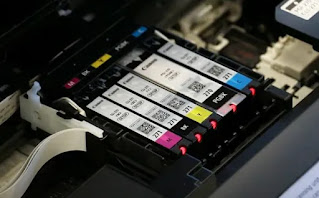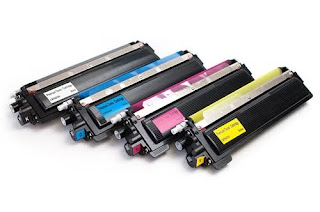The Differences Between Printer Toner vs Ink
Toner and ink differ greatly, from the printing process to the type of cartridge you'll use in your device. While most conventional inkjet home printers use ink, laser printers rely on toner and lasers for output. Because they are based on their own unique technology, they have their own set of advantages and disadvantages.
Laser printing is commonly associated with larger offices and businesses, but the technology has become more widely available. Laser printers designed to use efficient toner cartridges become more affordable every year as a result of ongoing improvements, a diverse printer market, and a diverse range of consumers each with their own set of requirements.
If you're not familiar with how efficient toner-based laser printers can be, it's probably worth learning more about the technology. Of course, whether you prefer laser or ink printing is heavily dependent on how you use your printer. How much and what you print can have a bigger impact on maintenance and costs than you might think.
What exactly is an inkjet printer?
Inkjet printers are the most common type of consumer printer that uses ink cartridges. While some inks are made differently than others, they all use a liquid base and a coloring agent. This is the standard for many home users. Inkjet printers essentially make home printing a breeze, and they will undoubtedly be useful for many years to come.
If you're not familiar with how efficient toner-based laser printers can be, it's probably worth learning more about the technology. Of course, whether you prefer laser or ink printing is heavily dependent on how you use your printer. How much and what you print can have a bigger impact on maintenance and costs than you might think. If you are unfamiliar with how efficient toner-based laser printers can be, it is probably worthwhile to learn more about the technology. Whether you prefer laser or ink printing is, of course, heavily dependent on how you use your printer. How much and what you print has a greater impact on maintenance and costs than you may realize.
Configurations for ink supply and cartridges
Most inkjet printers have two or four cartridges in total for ink supply. There is always one black ink cartridge and either three individual color cartridges (cyan, magenta, and yellow) or a single tri-color cartridge. When printing, the tri-color cartridge blends all three inks to achieve a level of clarity comparable to that of dedicated color cartridges.
In smaller printer designs, tri-color cartridges are unquestionably more convenient and save space. They also save you money when compared to purchasing three separate color cartridges. However, they are frequently less efficient because if one color runs out, the entire cartridge must be replaced.
What exactly is a toner printer?
If you're wondering if toner and ink are even remotely similar, the short answer is no. Inkjet printers use a liquid medium with a coloring agent, whereas laser printers work by projecting a unique electrostatic charge against a printing drum. This is essentially how your printer defines the content of each job, whether it's text or simple images.
How does toner function?
Printer toner, which is typically stored in a single cartridge, is a powder-based print medium made of granulated plastics that allows for greater accuracy and control. The charged printing drum collects toner powder and transfers it to paper. The paper is finally heated to melt the toner particles.
Lasers imprint the electrostatic charge on the drum, hence the term "laser printer." While laser printing is mostly used for black-and-white prints, color options are available with the aforementioned four-cartridge configuration.



